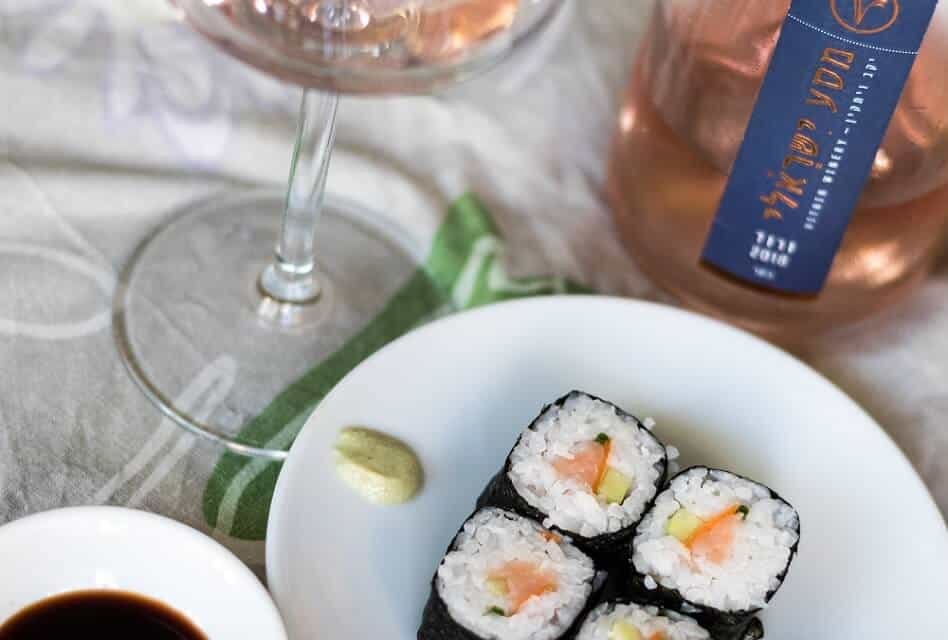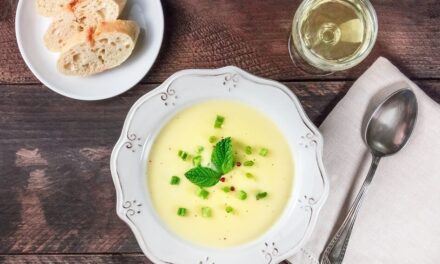Modern dining focuses more and more on healthy and light meals. And traditional Japanese sushi fits perfectly into this trend. It is flavorful and delicate, yet low in calories, and made from natural, healthy ingredients. And what could be better than combining healthy sushi with wine?
The best way to pair sushi with wine is to go for light, unoaked white wines. Both dry and off-dry styles are fine, but you should avoid sweet wines. Tannic wines are a no-go, and the same is true for most red wines.
Of course, there are plenty of sushi variations, and depending on your choice, you need to alter your wine pairings, too. In the following article, we will discuss the best wine and sushi pairings in detail:
- Tuna Tataki and Wine
- Spicy Tuna Sushi and Wine
- Unagi Sushi Rolls and Wine
- Dragon Rolls and Wine
- California Rolls and Wine
- Salmon Nigiri and Wine
- Vegetarian Sushi and Wine
As you can find many different types of sushi in Asian cuisine, let us briefly discuss them, as well as some basic wine pairing rules.
WHAT IS SUSHI?
Sushi is a traditional dish from Japan. Its main ingredient is steamed, vinegared rice combined with seafood such as fish or shellfish and vegetables. In many cases, the ingredients are wrapped in seaweed sheets.
You can find countless sushi dishes with many different ingredients, which might be raw or cooked. All dishes belong to one of the following sushi categories:
- When thinking about sushi, Maki is often what first comes to mind. Maki rolls are basically seaweed sheets filled with rice and other ingredients, including fish, shellfish, or vegetables.
- Uramaki sushi is very similar to Maki, with one difference: While the fish and vegetables are wrapped inside the seaweed, the rice is on the exterior as an additional layer.
- Temaki sushi contains similar ingredients to Maki or Uramaki sushi. But it looks quite different: The seaweed comes in the form of big cones filled with seafood, vegetables, and rice. The portions are significantly bigger, and thus it is not as easy to share as the small Maki rolls.
- Nigiri sushi is made primarily from steamed rice topped with wasabi and a bit of seafood.
- Many people also consider Sashimi as a type of sushi. But actually, it is not sushi, but a distinct dish. The main difference to sushi is the lack of rice and seaweed. So Sashimi is mainly raw seafood, sometimes with small portions of vegetables.
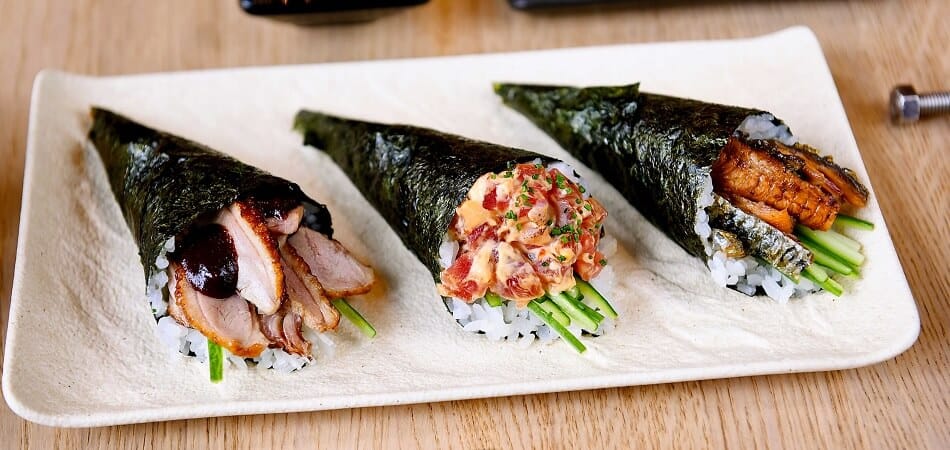
Terimaki Sushi
All types of sushi typically come with one or more sauces or dips. Among them are:
- Soy sauce: a classic in Asian cuisine, featuring both salty and sweet notes
- Ponzu sauce: an advanced soy sauce that features citrus and ginger and thus has not only sweet and salty but also sour and spicy notes
- Unagi sauce (also: eel sauce): a mostly sweet sauce with salty notes mixed from soy sauce, sugar, sake, and mirin
- Wasabi: a very spicy thick paste containing horseradish and mustard
- Vinegar-pickled ginger: not a sauce, but nevertheless a common side dish that adds spicy heat as well as tart notes
HOW TO PAIR SUSHI AND WINE
When looking for a wine to pair with sushi, there are some things you should keep in mind:
- Sushi is light food, and bold wines will overpower it. Thus, better go for light- to medium-bodied wine that is not too high in alcohol.
- Old World wines are better options than New World wines because these are often too intense, especially when oaked.
- Most white wines are great with sushi, given they are dry or off-dry. Stay away from very sweet wines.
- If you are a red wine lover, your options are limited. Richer sushi preparations with tuna or salmon go well with light-bodied reds. But full-bodied reds are a no-go.
- The combination of tannins and fish can create a very unpleasant metallic taste. So avoid high-tannin wines.
- Spicy sushi dishes call for wines that regulate their heat. Sparkling wines, as well as sweet still wines, are good choices.
With these recommendations in mind, let us check out some of the best wine and sushi pairings in detail.
Tuna Tataki and Wine
Tuna Tataki is an easy-to-make dish. It contains quick-seared tuna cuts spiced with salt and pepper and served with a Ponzu sauce. The sauce consists of lemon juice, ginger, and soy sauce. Some chefs also add red pepper flakes to make it even hotter.
Tataki sushi combines salty, spicy, and slightly sour flavors with delicate tuna meat. Unlike other seafood, tuna is chewy but not overly fishy.
A great wine pairing for Tuna Tataki is an off-dry Riesling, for instance, from Germany or Austria. The wine’s citrus flavors work very well with the Ponzu sauce, while its subtle sweetness creates an interesting contrast to the meal’s spicy note.
Dr. Loosen Wehlener Sonnenuhr Riesling Spätlese 2019
- type: white, still, Vintage
- origin: Germany, Mosel
- varietal: Riesling
- alcohol: 8.5%
Schloss Vollrads Rheingau Riesling Spätlese 2016
- type: white, still, Vintage
- origin: Germany, Rheingau
- varietal: Riesling
- alcohol: 7.5%
J.J. Prum Graacher Himmelreich Riesling Kabinett 2020
- type: white, still, Vintage
- origin: Germany, Mosel
- varietal: Riesling
- alcohol: 9.0%
As tuna is a relatively fatty type of fish, Tuna Tataki is one of very few sushi dishes to handle a red wine. It should be a light one with a low tannin level, though. Try Pinot Noir or, alternatively, Beaujolais.
Nicole Chanrion Domaine de la Voute des Crozes Cote de Brouilly 2020
- type: red, still, Vintage
- origin: France, Burgundy
- varietal: Gamay
- alcohol: 13.0%
Chateau des Bachelards Fleurie Le Clos 2018
- type: red, still, Vintage
- origin: France, Burgundy
- varietal: Gamay
- alcohol: 13.5%
Domaine de Colette Morgon 2018
- type: red, still, Vintage
- origin: France, Burgundy
- varietal: Gamay
- alcohol: 13.0%
Spicy Tuna Sushi with Wine
If you are into very hot food, you might like spicy tuna sushi. Unlike Tataki, it comes as Uramaki rolls, with rice covering the outside of a seaweed sheet. The inside is filled with ripe avocado and raw tuna marinated with a mix of mayonnaise and sriracha sauce. The sriracha sauce is where the heat comes from: It’s a hot sauce made from chili peppers, garlic, sugar, and vinegar.
Spicy tuna rolls are very flavorful with sweet, savory, and spicy aromas. As mentioned, the tuna does not have the typical fishy taste, so these rolls are fantastic for people who dislike fish.
Just like Tuna Tataki, spicy tuna rolls go very well with off-dry Riesling, too. These wines are high in acidity, so they can easily cut through the rich fish as well as the spicy mayonnaise mix. And their subtle sweetness is an excellent counterplayer to the sushi’s heat.
Unagi Sushi Rolls and Wine
Another widely loved type of Uramaki sushi is the Unagi roll. Its ingredients are freshwater eel, cucumber, and rice. The fish and the cucumber are rolled into a Nori seaweed sheet and covered with rice and sesame seeds. Unagi sushi typically comes with Unagi sauce. This sweet and salty sauce is a mix of soy sauce, sugar, sake, and mirin, a special type of Japanese rice wine.
Eel is known for its soft texture and its bold aromas that feature a bit of sweetness. The Unagi sauce contributes additional sweet notes and some saltiness to the flavor mix.
When pairing Unagi sushi with wine, consider a white with intense citrus flavors. Especially highly aromatic wines such as Gewürztraminer or Grüner Veltliner are delicious matches. They feature aromas of green and citrus fruits as well as herbal and spicy notes.
- type: white, still, Vintage
- origin: Alsace, France
- varietal: Gewürztraminer
- alcohol: 14.0%
Zind-Humbrecht Gewürztraminer 2019
- type: white, still, Vintage
- origin: Alsace, France
- varietal: Gewürztraminer
- alcohol: 14.0%
Albert Boxler Gewürztraminer Reserve 2018
- type: white, still, Vintage
- origin: Alsace, France
- varietal: Gewürztraminer
- alcohol: 14.0%
Weingut Alzinger Steinertal Smaragd Grüner Veltliner 2019
- type: white, still, Vintage
- origin: Austria, Wachau
- varietal: Grüner Veltliner
- alcohol: 13.5%
Pratsch Organic Grüner Veltliner 2020
- type: white, still, Vintage
- origin: Austria, Niederösterreich
- varietal: Grüner Veltliner
- alcohol: 12.5%
Schloss Gobelsburg Schlosskellerei Gobelsburger Grüner Veltliner 2020
- type: white, still, Vintage
- origin: Austria, Kamptal
- varietal: Grüner Veltliner
- alcohol: 12.5%
Dragon Rolls and Wine
Dragon Rolls are comparable to Unagi rolls. They also have an outside layer of rice around Nori sheets and an inside filling from seafood. Instead of eel, chefs use shrimps to make Dragon Rolls, though. They coat the shrimps with a tempura batter made from flour, water, cornstarch, and eggs first and deep-fry them next. Finally, they top the roll with a slice of ripe avocado to give it a dragon-like look.
The soft avocado and the crunchy shrimp tempura combine deliciously with the rice and the Nori sheets. Unagi sauce rounds up the dish with its salty and sweet aromas.
The best wine to drink with Dragon Rolls is a dry white wine with a good acidity level. Try a Spanish Albariño. This light-bodied wine offers aromas of citrus and honeydew while being very low in tannins; just the perfect match for Dragon Rolls. Alternatively, you can choose the formerly mentioned Gewürztraminer or Grüner Veltliner wines.
The crispy shrimp also pair well with sparkling wines, particularly when you serve your Dragon Rolls with very spicy sauce. The sparkler’s bubbles help clean your palate after each bite and remove the dish’s heat. So try a Champagne or a Prosecco:
- type: white, sparkling
- origin: Champagne, France
- varietal: Chardonnay, Pinot Noir
- alcohol: 12.0%
- type: white, sparkling
- origin: Champagne, France
- varietal: Chardonnay, Pinot Noir, Pinot Meunier
- alcohol: 12.0%
- type: white, sparkling
- origin: Champagne, France
- varietal: Chardonnay, Pinot Noir, Pinot Meunier
- alcohol: 12.5%
- type: white, sparkling
- origin: Veneto, Italy
- varietal: Glera
- alcohol: 11.0%
- type: white, sparkling
- origin: Veneto, Italy
- varietal: Glera
- alcohol: 11.0%
Fantinel One and Only Prosecco Brut 2017
- type: white, sparkling, Vintage
- origin: Friuli-Venezia Giulia, Italy
- varietal: Glera
- alcohol: 12.0%
California Rolls and Wine
Among the most popular sushi dishes in the United States are California Rolls. As the name suggests, they were actually invented in California, more specifically, Los Angeles. California Rolls are Uramaki dishes, too, meaning that the rice forms the roll’s outside. The inside is filled with cooked crab meat, cucumber, avocado, and Japanese mayonnaise. Some chefs also add tropical fruits.
California Rolls feature an exciting mix of salty, spicy, and sweet aromas. The mayonnaise adds a flavor layer that makes this dish unique.
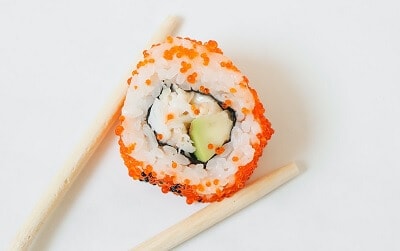
California Roll
This flavor profile goes exceptionally well with a fruity Chardonnay wine. The crisp white can perfectly handle the meal’s rich flavors, and its citrus flavors combine deliciously with its sweet and fruity aromas.
Joseph Drouhin Macon Villages 2019
- type: white, still, Vintage
- origin: Burgundy, France
- varietal: Chardonnay
- alcohol: 13.0%
Bouchard Pere & Fils Meursault (Domaine) 2017
- type: white, still, Vintage
- origin: Burgundy, France
- varietal: Chardonnay
- alcohol: 13.5%
Domaine Leflaive Puligny-Montrachet Les Pucelles Premier Cru 2018
- type: white, still, Vintage
- origin: Burgundy, France
- varietal: Chardonnay
- alcohol: 13.0%
Sparkling wine lovers can pick a sparkling rosé for their California Rolls:
Lothar Kettern Spätburgunder Rosé Sekt
- type: rosé, sparkling
- origin: Mosel, Germany
- varietal: Pinot Noir
- alcohol: 12.5%
Sekthaus Raumland Rosé Prestige Brut Sekt
- type: rosé, sparkling
- origin: Rheinhessen, Germany
- varietal: Pinot Noir
- alcohol: 12.0%
Von Buhl Pfalz Rose Brut Sekt 2017
- type: rosé, sparkling, Vintage
- origin: Pfalz, Germany
- varietal: Pinot Noir
- alcohol: 12.5%
Salmon Nigiri and Wine
Many sushi lovers are into salmon because it lacks the typical fish taste, just like tuna. Thus, Salmon Nigiri is very popular, and it is also easy to make: You simply prepare a small portion of vinegared rice and top it with a slice of salmon. The salmon can be either raw or smoked. People who like hot sushi apply some wasabi to the fish, but that is an optional step.
Salmon is delicate and rich in flavor, making Salmon Nigiri a great match for dry rosé wines. Especially styles from Provence in France add delicious red fruit and floral aromas and create a fascinating flavor mix.
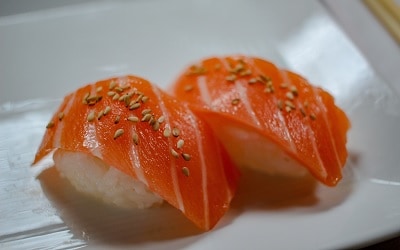
Salmon Nigiri
La Bernarde Cotes de Provence Rose Les Hauts de Luc 2020
- type: rosé, still, Vintage
- origin: France, Provence
- varietal: Cinsault, Grenache, Mourvedre, Rolle, Syrah
- alcohol: 12.5%
- type: rosé, still, Vintage
- origin: France, Provence
- varietal: Carignan, Cinsault, Grenache
- alcohol: 13.0%
Mirabeau Cotes de Provence Rose 2020
- type: rosé, still, Vintage
- origin: France, Provence
- varietal: Cinsault, Grenache, Syrah
- alcohol: 13.0%
Vegetarian Sushi with Wine
Of course, sushi does not have to contain seafood. You can find many vegetarian variations featuring ingredients like asparagus, cucumber, avocado, or tofu. Modern preparations also come with sweet potato, eggplant, or tropical fruits such as mango or jackfruit.
Vegetarian sushi is typically a bit lighter than seafood sushi. It also lacks intense fishy flavors and is less salty. Depending on the ingredients, it can range from sweet to spicy.
White wines from the Chablis appellation in Burgundy are excellent pairings for vegetarian sushi. Their good acidity levels and their citrus aromas complement most ingredients without overpowering the light dishes. You can either go for the Petit Chablis wines from the region’s outskirts or the more costly Premier Cru wines. Be careful with Grand Cru styles, though. As they age in oak barrels, they might be too powerful for vegetarian sushi.
Domaine Drouhin Vaudon Chablis 2020
- type: white, still, Vintage
- origin: Burgundy, France
- varietal: Chardonnay
- alcohol: 12.5%
Brocard Vau de Vey Chablis Premier Cru 2019
- type: white, still, Vintage
- origin: Burgundy, France
- varietal: Chardonnay
- alcohol: 14.5%
William Fevre Chablis Vaudesir Grand Cru 2018
- type: white, still, Vintage
- origin: Burgundy, France
- varietal: Chardonnay
- alcohol: 13.0%
FINAL WORDS
Traditional Japanese sushi and wine might not be the first pairing that comes to mind. But there are so many great combinations that every sushi lover should try. So when ordering (or making) it next time, consider a bottle of delicious wine with your sushi.

